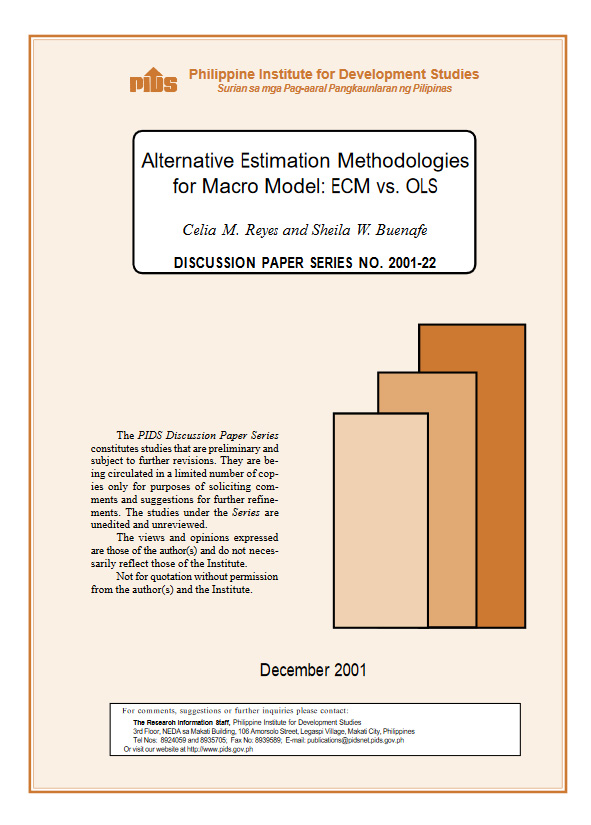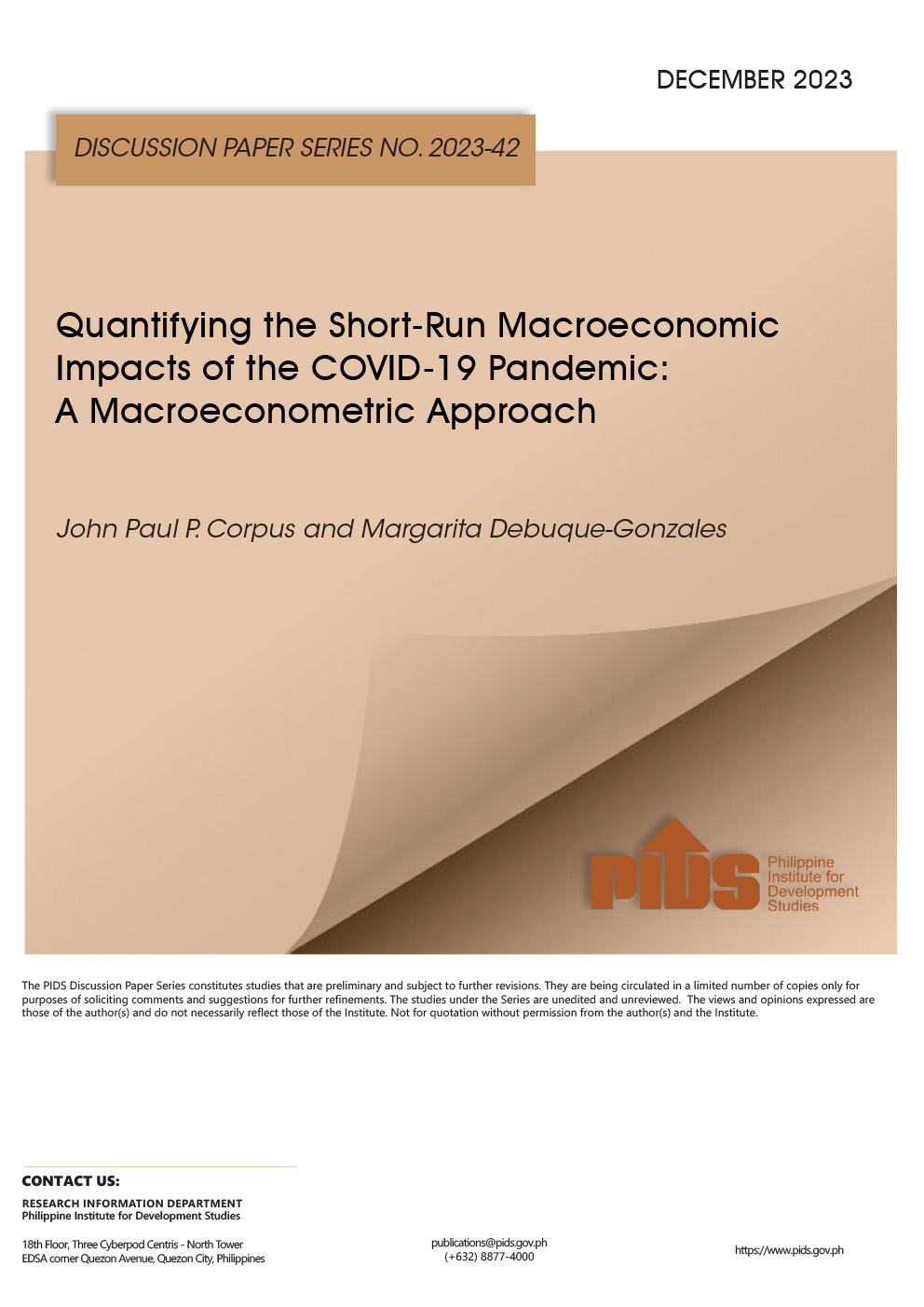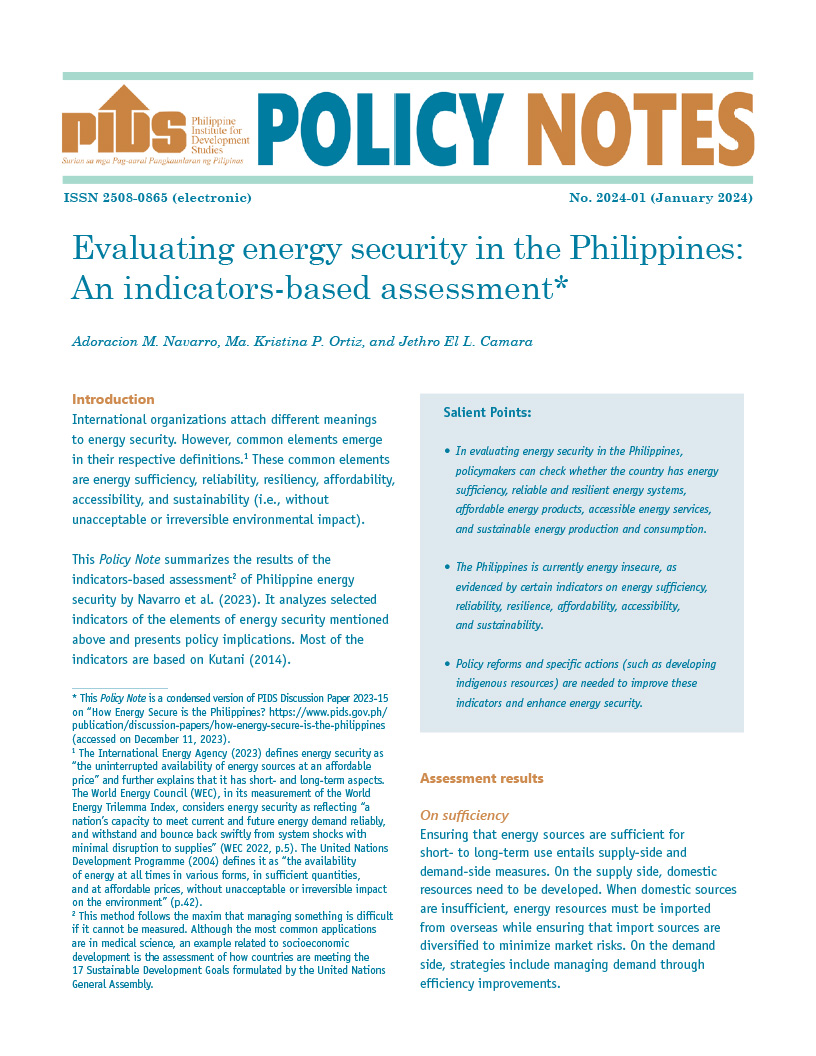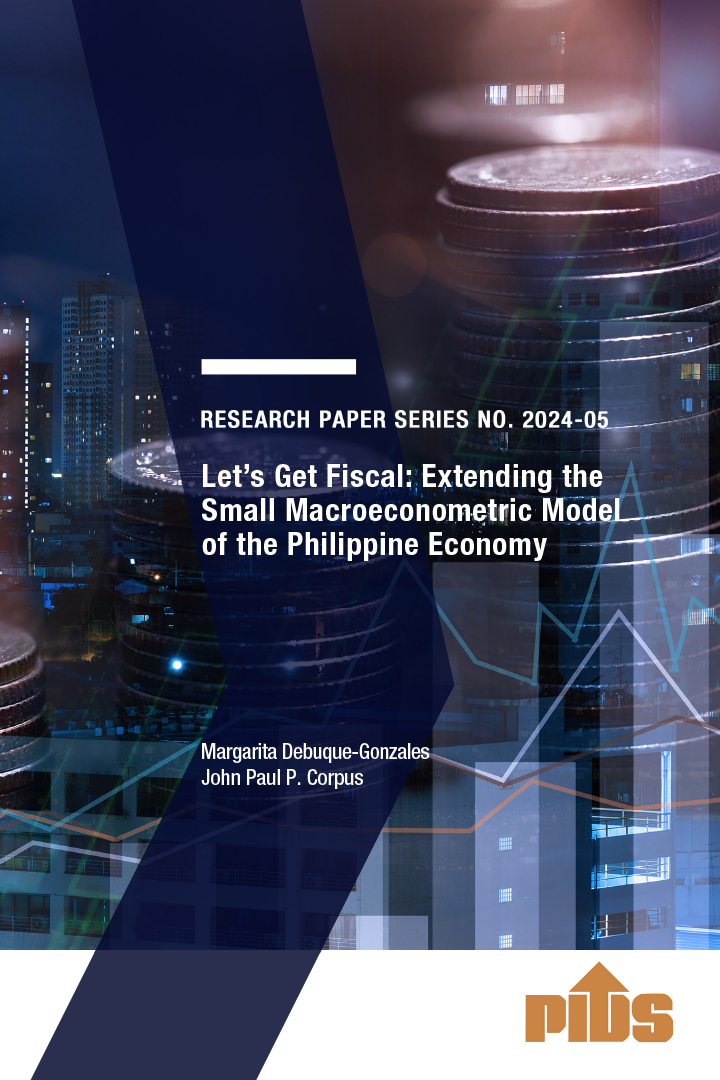Macroeconometric models have proven to be a useful tool in analyzing the economy-wide or sector-specific effects of policy measures. Simulations using these models have enabled planners and policymakers to trace through the effects of proposed policy changes or external shocks as well as quantify their impacts. Their importance as an aid to planning is well recognized. The NEDA Annual Macro Social Model employed the Error Correction Model representation of the dynamic model. Two-stage estimation is used. The first stage determines the long-run relationship among the variables. The second stage illustrates the short-run dynamics influenced by the deviation from the long-run relationship. The PIDS Annual Macro Social Model had followed the model structure and specifications of the equations used for NEDA AMSM making use of the Ordinary Least Squares estimation. The tracking performances of the two models were evaluated after the dynamic simulation over the period 1992 – 1998. The criterion for good performance is that Mean Absolute Percentage Error (MAPE) should be as small as possible. In general, the results showed that the Error Correction Model method performs better than the OLS estimation method. In addition, the ECM captures better the volatile behavior of the data. However, the procedure for doing the ECM method is not as simple as in employing the OLS method since it is quite complicated and tedious. Moreover, a set of cointegrating variables is necessary. In contrast, employing the OLS estimation is simpler. For each variable, a single equation is estimated incorporating both long-run and short-run dynamics. Adequacy of the equations is determined through adjusted R 2, Durbin Watson and stationarity of the residuals.
Citations
This publication has been cited 1 time
- Hasanov, Fakhri J., Muhammad Javid, and Frederick L. Joutz. 2022. Saudi non-oil exports before and after Covid-19: Historical impacts of determinants and scenario analysis. Sustainability, 14, no. 4, 1-38. MDPI.







